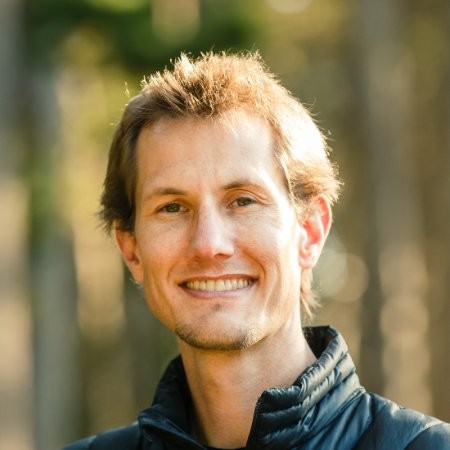
This is the seventh in a weekly series of excerpts from the upcoming book The B Corp Handbook: How to Use Business as a Force for Good (Berrett-Koehler Publishers, October 13, 2014).
By Ryan Honeyman Many B Corps report that one of the biggest benefits of the certification process is taking the B Impact Assessment, a free tool that measures the social and environmental performance of the entire company on a scale from zero to 200 points. This enables any business to measure the impact of its operations on its workers, its community, and the environment; compare itself to its industry peers; and compete to improve its performance over time. The B Impact Assessment is particularly valuable because no matter how sustainable your business already is (or is not), you will undoubtedly find blind spots that you can address to further benefit your stakeholders. Patagonia is a great example of a company that uses the B Impact Assessment for continuous improvement. On its initial B Corp certification, Patagonia — one of the most eco-friendly companies on the planet — scored 106 out of 200 points. Although earning only half of the points on the B Impact Assessment might seem like a poor performance, Patagonia’s score was well above both the 80 points required for B Corp certification and the median score of 95 points for all Certified B Corps. Indeed, the B Impact Assessment is designed to be tough. Rather than trying to get a perfect score on the first try (which is virtually impossible, because no company is perfect), you can use the assessment to measure your company’s social and environmental performance, provide valuable insights that can help spark new ideas, and motivate your company to reach for an improved score over time. In addition, B Corps such as The Redwoods Group, a commercial property casualty insurer based in North Carolina, use the free B Impact Assessment as a guide for their corporate social responsibility reporting. In many cases, substituting the assessment for conventional corporate social responsibility reporting can save considerable time and money. Ryan Honeyman is a sustainability consultant, executive coach, keynote speaker, and author of The B Corp Handbook: How to Use Business as a Force for Good. Ryan helps businesses save money, improve employee satisfaction, and increase brand value by helping them maximize the value of their sustainability efforts, including helping companies certify and thrive as B Corps. His clients include Ben & Jerry’s, Klean Kanteen, Nutiva, McEvoy Ranch, Opticos Design, CleanWell, Exygy, and the Filene Research Institute. To get exclusive updates and free resources that can help you learn more about B Corporations, sign up for Ryan’s monthly newsletter. You can also visit honeymanconsulting.com or follow Ryan on Twitter:@honeymanconsult."Before the B Impact Assessment, we struggled with aligning our internal processes and assuring our deep-thinking team members that the company was being guided for maximum impact. Now we have a road map and partners that help us establish effective governance practices and policies. Becoming a Certified B Corp put it all together for us." —Regina Wheeler, CEO, Positive Energy Solar
"Our biggest surprise, considering our one hundred percent commitment to sustainable materials and ethical labor practices, was that we did not score higher on the B Impact Assessment. It was eye opening to realize that we could still improve in many different areas of our business." —Matt Reynolds, president and co-founder, Indigenous
Some B Corps, such as Ben & Jerry’s and Numi Organic Tea, are going further by using the B Impact Assessment to benchmark their key suppliers. The assessment’s comprehensive, rigorous, and comparable metrics is helping these companies better understand both the overall impact of their supply chain and the individual performance of their various suppliers. Ben & Jerry’s is interested in using the B Impact Assessment to help guide their procurement and sourcing decisions in the future.

Ryan Honeyman is a sustainability consultant, executive coach, keynote speaker, and author of "The B Corp Handbook: How to Use Business as a Force for Good" (Berrett-Koehler Publishers, October 2014), the world’s first book on B Corporations.
Ryan helps businesses save money, improve employee satisfaction, and increase brand value by helping them maximize the value of their sustainability efforts, including helping companies certify and thrive as a B Corp. His clients include Ben & Jerry’s, Klean Kanteen, Nutiva, CleanWell, Exygy, and the Filene Research Institute.
Honeyman Sustainability Consulting, a Certified B Corporation, was recently honored—alongside Patagonia, Seventh Generation, New Belgium Brewery, GoLite, and Method—on the 2014 B Corp “Best for the Environment List,” which recognizes businesses that have scored in the top 10% of all B Corps worldwide for positive environmental impact.
Ryan has written articles for Utne Reader, TriplePundit, Sustainable Industries, and the Credit Union Times. He has also been a featured speaker at the Wharton School of Business at the University of Pennsylvania, the Hass School of Business at the University of California, Berkeley, San Francisco State University, Mills College, the California College of the Arts, the Sustainable Enterprise Conference, the Marin Renaissance Entrepreneurship Center, the New Sector Alliance, Nextspace, the Impact Hub Oakland, and the Impact Hub SoMa in San Francisco.
Ryan holds a B.A. from the University of California, Santa Cruz and a M.Sc. from the London School of Economics and Political Science.














